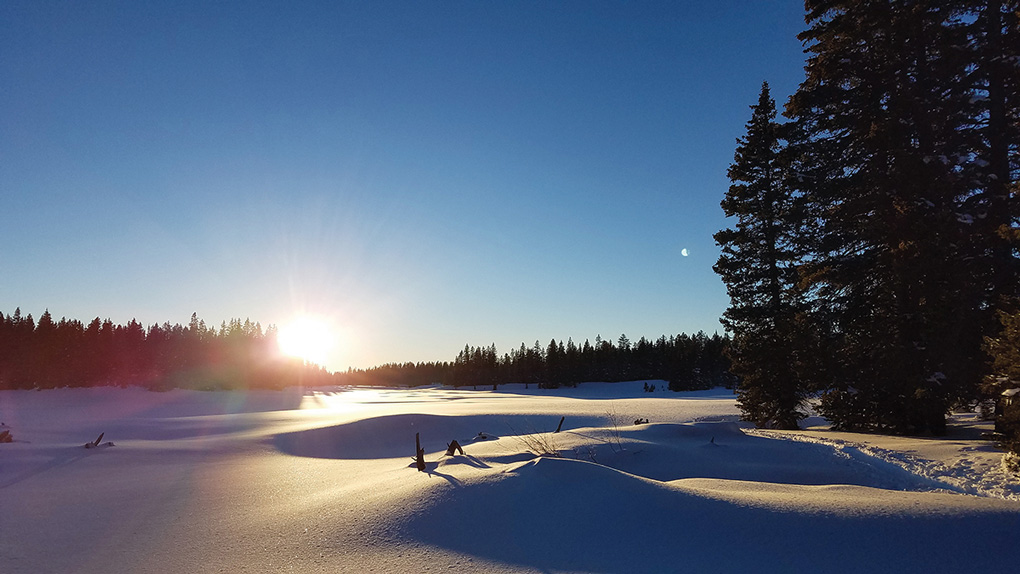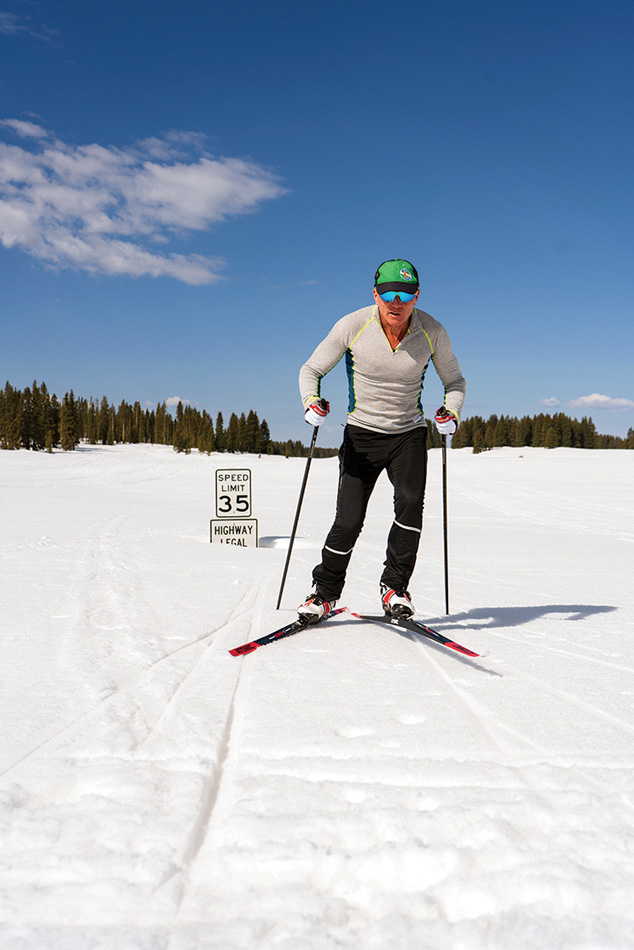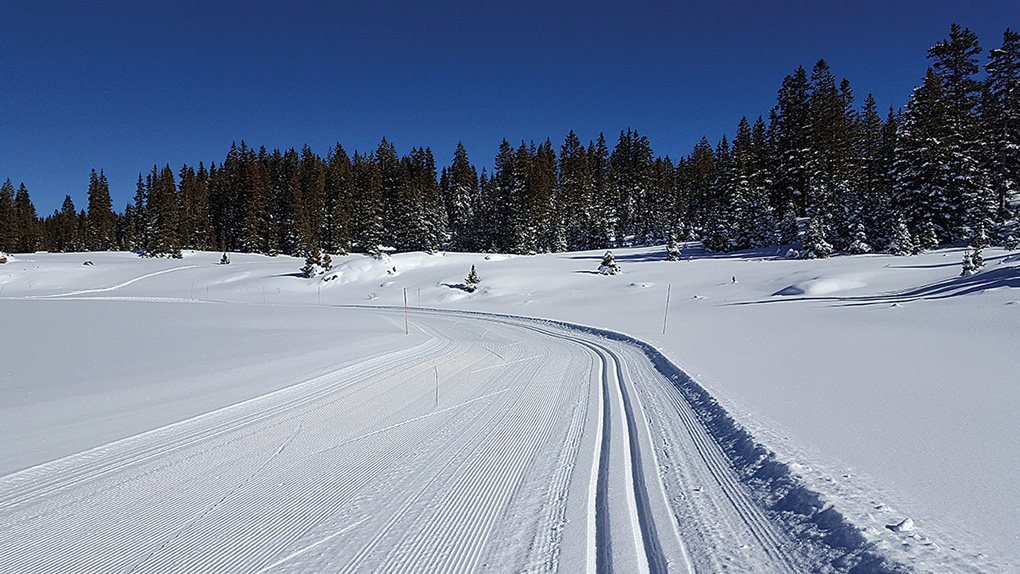Western colorado’s Grand Mesa is the highest flat-topped mountain in the world. Rising to 11,000 feet where the Colorado Plateau—Edward Abbey’s country—meets the Rockies, the Mesa receives the first cut of snow from storms off the Pacific. The snow total here averages at least 300 inches per year and is the same light, fluffy powder that puts the state’s downhill resorts, such as Aspen and Vail, on the international map. In the spring, wild mushrooms grow in the forests. And snowmelt from the Mesa waters cherry groves, vineyards and peach orchards—Palisade peaches are a summer treat—before it flows into the Colorado River.

The Grand Mesa Nordic Council (GMNC), a member-supported nonprofit based in nearby Grand Junction and Montrose, maintains 50 kilometers of trails for cross country skiing on the Mesa. Operating under special-use permits from the U.S. Forest Service, the GMNC grooms 32 kilometers of trails at County Line and Skyway, two access points, for classic and skate skiing. The organization also manages 18 kilometers of ungroomed terrain at the Ward trailhead for backcountry touring, as well as a warming hut at the Skyway trailhead. There are no use fees, though a donation of $10 per adult is suggested to help offset maintenance costs. The GMNC also offers ski lessons and hosts a race series throughout the winter.
At a little higher than 10,000 feet, the Grand Mesa trail system is one of two highest groomed Nordic networks in Colorado. (The other, Tennessee Pass, near Leadville, is at about the same elevation.) Contrasting with many of the state’s Nordic trail systems which are on valley floors, where skiers look up at long ranges of snowcapped mountains, the Grand Mesa trails are at the top of the world, with sweeping views of the rocky desert below. On a good day, the La Sal Mountains are visible, rising sharply from the desert in Utah more than 100 miles away. Or so I am told, as my husband and I drove out from Denver last season during one of March’s stormiest weekends.

In hindsight, that weekend might have been better for downhill skiing at Powderhorn Resort, also on the Mesa and one of the few remaining Colorado slopes with a down-home vibe. The forecast called for up to three feet of snow Saturday into Sunday, and when we drove back to Denver on Sunday, we narrowly missed an avalanche that closed Interstate 70 near Vail. The GMNC had groomed some of the trails the day before, but the powder was already ankle-deep when we arrived at the Skyway trailhead around noon. As we drove on Highway 65, along a creek that carved a canyon into the layers of sedimentary rock, we caught glimpses of the views that we might have seen more clearly on another day. But the Mesa top was socked in with fog and snow.
Given the conditions and lack of packed snow, we decided on classic skis and chose a trail that meandered through the forest. Snow was filling in the classic tracks, but skiers before us had conscientiously kept them open. We also saw the V-shaped ladders of skate marks and wondered who was crazy enough to skate in such deep snow. Though we could kick and glide, the tracks were soft. It was slow, more like backcountry touring, though it is a testament to GMNC’s grooming that, for the most part, we did not have to break trail. And the signage was excellent: bright blue diamonds and stakes mark the trails, and the numbered signs on the intersections all face north, making it easy to orient the water-resistant maps provided at the trailhead. The terrain is rolling with a few steep climbs and descents. If not for the weather, we would have continued on the Vista Ridge trails that connect Skyway to County Line.

I enjoy a cozy lodge with a fireplace and hot chocolate after a day of skiing, but there are certain pleasures in being out in a back-to-basics environment, where the focus is on the joys of the sport rather than the convenience of the amenities. Not to say that we did not complain—the last stretch to the trailhead was in open meadows with few trees for shelter, and the winds blew in our faces and over whatever tracks the groomers might have made. And though we could not see much of it through the snow, the terrain of the Grand Mesa—from which you can see the vast desert from high above—is certainly one thing that’s unique to this high destination.
This story first appeared in the Midwinter 2020 issue of Cross Country Skier (#39.3).
Editor’s Note: In August 2021, Grand Mesa Nordic Council (GMNC) shared the news that a Forest Service timber operation could potentially impede grooming operations, as well as impede skiing on the Scales Lake Trail—the primary route that connects the Skyway and County Line trail systems—for the next five ski seasons. The Forest Service decision violates a 30-plus year operating agreement with GMNC. The council requested that logging operations be curtailed after November 15, 2021. For more information and for contacts to voice an opinion, visit gmnc.org